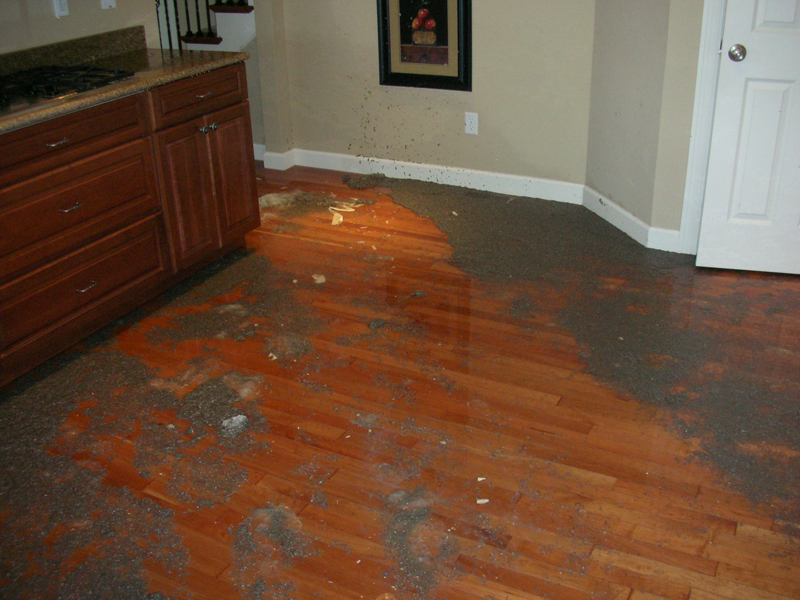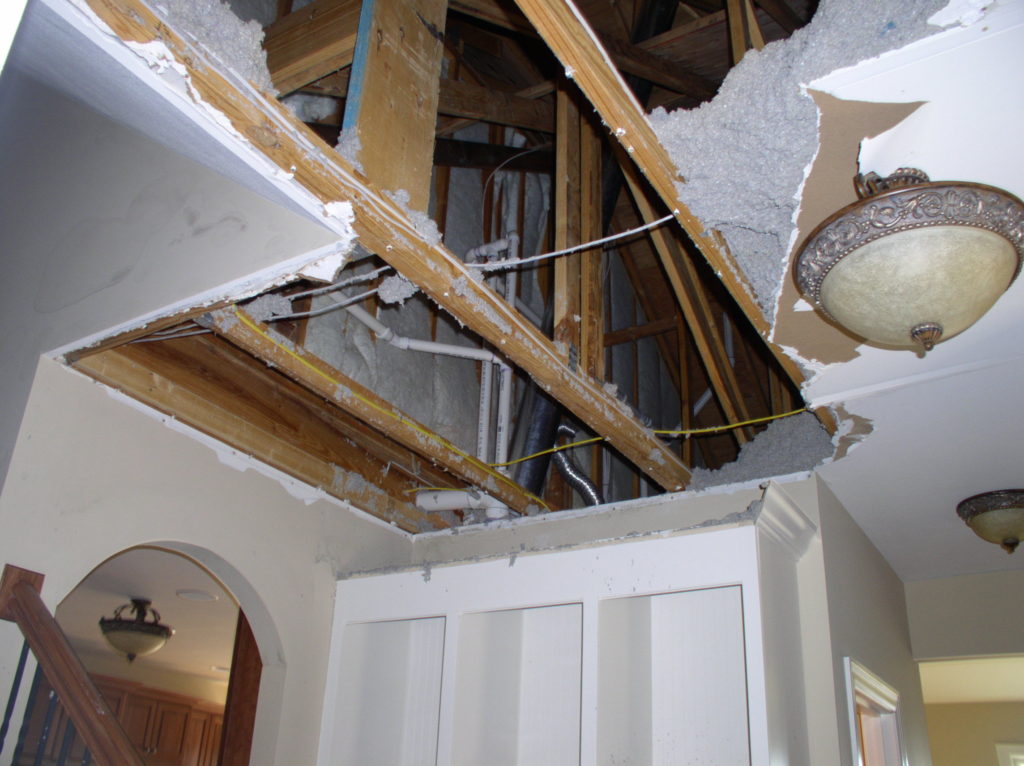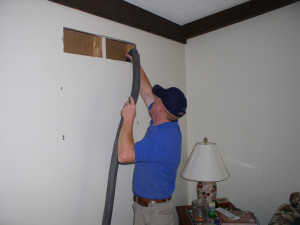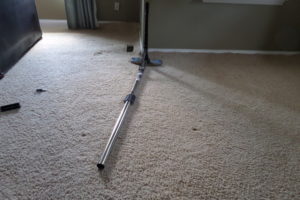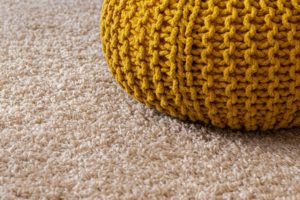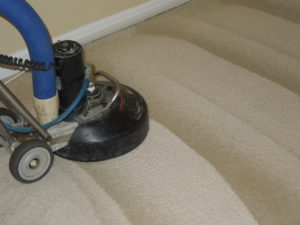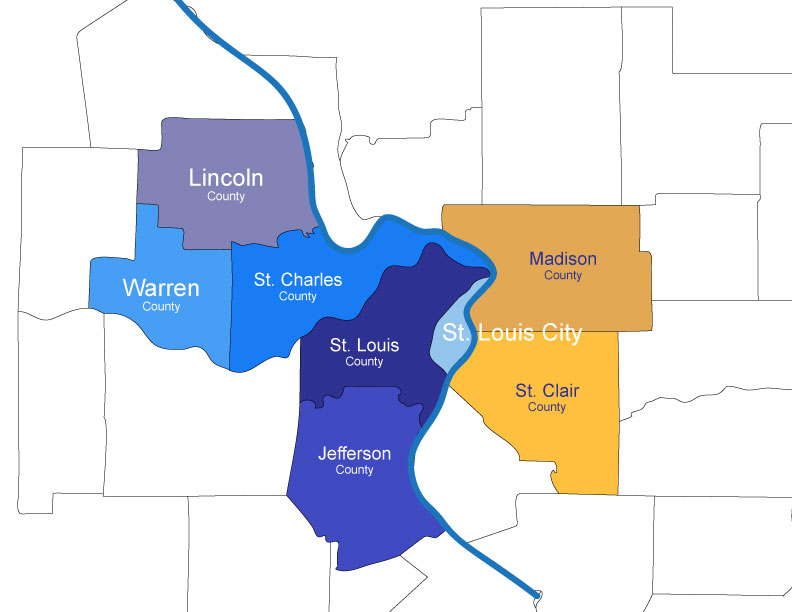The thought of pipes freezing may seem a bit melodramatic, but it isn’t far-fetched. In fact, it happens more often than you probably realize. Water that freezes during the winter in an unprotected pipe expands, and that expansion can rupture. And we all know how our St. Louis weather can be unpredictable, so it’s smart to be prepared. We’ll cover prevention later. But if you’re reading this article, you’ve likely already discovered a frozen pipe and are looking for a solution.
What to Do if Your Pipes are Frozen
STEP 1: Apply Heat
Adding heat to a frozen pipe helps speeds up the process of melting the ice. Try wrapping a heating pad around it, blowing an electric hair dryer on it, or plugging in a space heater nearby to achieve the quickest results.
STEP 2: Open Your Faucets
To thaw a pipe, you can start near your faucet. In order to do this, you want to make sure your faucet is still on. Identify the frozen water supply pipe, and from there, you will be able to locate the blocked area. As you begin to treat the pipe, the water will help melt ice in the pipe as it passes by.
STEP 3: Turn Up the Heat
Turn up the thermostat in your home to impact pipes hiding behind the walls. Many people like to lower their thermostat when they’re out of town, but be sure to keep your house at around 60 degrees or higher to ensure the pipes don’t freeze.
As the pipe begins to thaw and water begins to flow from the faucet, allow the faucet to stay open for a few minutes. Make sure that all the ice is clear from the pipe. Once everything is all clear, cut off the faucet and check the line for leaks. From there, you will be able to decide if you need to replace or repair the pipe.
How to Prevent Frozen Pipes
Taking preventative measures before the wicked winter weather hits, allows you to reduce and eliminate all cold-weather threats. Some pipes are more prone to freeze over others. Pipes that are against exterior walls have little or no insulation and are subject to freezing. As your thermometer starts descending, make sure you pay close attention to the condition of your pipes. Being prepared may help you avoid the messy and costly expenses that frozen pipes can bring. To that end Sams has a few suggestions on how to prevent water pipes from freezing and how to thaw them if they do.
Draining – Taking instructions from manufacturers or installers, drain all water from the swimming pool and water sprinkler supply lines. Do the same for hoses and store them indoors. Make sure to keep the outside valve open so that any water remaining in the pipe can expand without causing the pipe to break.
Inspection – Check around your home for other areas where water supply lines may be located, particularly in unheated areas. Pipe insulation can happen in the basement, attic, garage, kitchen and unexpected spaces. You want to check for hot and cold pipes. Low temperatures can affect all pipes in your home.
Installation – Heat tape and heat cable can go a long way toward preventing exposed pipes from freezing. These materials can be applied directly to pipes and provide significant protection from cold weather. They can be used to keep your pipes warm in areas that don’t have frequent or prolonged temperatures below freezing.
Prevention– During cold snaps (below 32 degrees) allow a faucet to drip slowly, moving water will keep the pipe from becoming blocked with ice and freezing. Also leave cabinets doors under sinks open to allow the warmer temperatures in your home to reach those pipes and keep them at a reasonable temperature.
When disconnecting your water/garden hose, make sure to cover all the outside faucets. If you plan on being away for a while, shut off your water supply that connects to you washer. Lastly, close all windows, to prevent combined wind drafts and freezing temperatures from freezing your pipes faster.
What to Do if a Pipe has Burst
The best solution for frozen pipe burst clean-up is to hire experienced and trained water damage restoration technicians. Water damage that seeps into the floors and drywall causes moisture that will rot the wood on walls and floors. At Sams, our water extraction and anti-microbial application techniques is incredibly effective at minimizing future mold and mildew problems.
If you’re ready for a proper inspection and assessment, contact us today. If you experience a water disaster, don’t fear. We can help.

